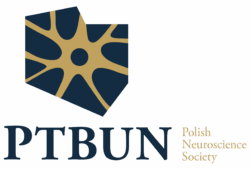Chair: Natalia Małek (Wroclaw University of Science and Technology, Wroclaw, Poland)
Symposium 14: Bridging Autoimmunity and Neurodegeneration: Immune Cells in Action
This symposium focuses on the immune mechanisms underlying autoimmune disorders and their impact on neurodegeneration. Presentations will discuss the roles of B cells, T cells, and macrophages in diseases like GABAA receptor autoimmune encephalitis and Anti-IgLON5 disease, paving the way for innovative clinical strategies and interventions.
Bart Eggen, Faculty of Medical Sciences, University of Groningen, Groningen, Netherlands
The Shapes and States of CNS Macrophages in the Healthy and Diseased Human Brain
Microglia exhibit a unique transcriptional profile that reflects their role as macrophages in the central nervous system (CNS). These cells are often key contributors to the initiation and progression of neuroinflammatory and neurodegenerative diseases. Recent studies have shed light on the changes microglia undergo during development and in various CNS conditions. Advances in single-cell and spatial profiling technologies have enabled detailed phenotyping of individual microglia. This discussion will focus on the heterogeneity of microglia and their critical roles in human CNS development, maintaining homeostasis, and contributing to neuroinflammatory diseases.
References:
1. Alsema AM, et al. Decoding spatial gene activity changes in multiple sclerosis lesion progression, Nature Neuroscience, in press
2. Eggen BJL, How the cGAS-STING system links inflammation and cognitive decline. Nature., 2023. doi: 10.1038/d41586-023-02240-1
A disclosure of any potential conflicts of interest: None
Maarten Titulaer, Erasmus MC, Erasmus University Rotterdam, Rotterdam, Netherlands
Integrating Single-Cell Sequencing and OLINK Proteomics in Understanding IgLON5 Disease
Recent research on IgLON5 disease has utilized single-cell sequencing and OLINK proteomics to gain insights into its pathophysiology. Single-cell analysis enables the characterization of individual immune and neuronal cell populations, revealing the heterogeneity of responses associated with IgLON5 antibodies. OLINK technology provides a comprehensive profiling of proteins in the cerebrospinal fluid, identifying potential biomarkers linked to disease progression and severity. Together, these advanced techniques have facilitated a deeper understanding of the immune and neurodegenerative processes underlying IgLON5 disease. This integrated approach may pave the way for the development of targeted therapies and improved diagnostic strategies for affected patients.
References:
1. Graus F, et al. A clinical approach to diagnosis of autoimmune encephalitis. Lancet Neurol., 2016. doi: 10.1016/S1474-4422(15)00401-9
2. Gelpi E, et al. Neuropathological spectrum of anti-IgLON5 disease and stages of brainstem tau pathology: updated neuropathological research criteria of the disease-related tauopathy. Acta Neuropathol., 2024. doi: 10.1007/s00401-024-02805-y
A disclosure of any potential conflicts of interest: Dr. Titulaer was supported by an Erasmus MC fellowship and received funding from various sources, including the Netherlands Organization for Scientific Research (NWO, Veni), ZonMw (Memorabel program), the Dutch Epilepsy Foundation, Dioraphte, E-RARE JTC 2018, the European Joint Program on Rare Diseases (EJP-RD), and the Erasmus Trustfonds. He has filed a patent for methods and devices related to neurological disorders and cancer on behalf of Erasmus MC. Dr. Titulaer also received research funds for serving on advisory boards for Horizon Therapeutics/Amgen and Argenx, consulting for Guidepoint Global LLC and UCB, and an unrestricted grant from Euroimmun AG and CSL Behring. Additionally, he receives royalties from UpToDate Inc.
Marta Kamińska, Jagiellonian University, Cracow, Poland
Assessing Blood-Brain Barrier Integrity and Neuroinflammation in Neurodegenerative Disease Using Mass Cytometry
The blood-brain barrier (BBB) serves as a critical interface between the brain tissue and peripheral blood, regulating the transport of metabolites and nutrients. Since vascular damage can be an early indicator of Alzheimer’s disease (AD), this study aimed to investigate the role of the periodontopathogen Porphyromonas gingivalis in BBB disruption and AD progression. Brain tissues from C57BL/6J and 5xFAD mouse models infected orally with P. gingivalis were analyzed using mass cytometry with a panel of 40 antibodies. Results showed increased neuroinflammation and reactive gliosis in the infected mice’s brain tissue, suggesting a link between P. gingivalis infection, BBB breakdown, and AD.
References:
1. Dominy SS, et al. Porphyromonas gingivalis in Alzheimer’s disease brains: Evidence for disease causation and treatment with small-molecule inhibitors. Sci Adv., 2019. doi: 10.1126/sciadv.aau3333
A disclosure of any potential conflicts of interest: None
Agnieszka Zabłocka, Hirszfeld Institute of Immunology and Experimental Therapy PAS, Wroclaw, Poland
Discovery of Yolkin Peptide Complex: A New Frontier in Brain Health and Immune Modulation
Scientific interest in food-derived compounds for preventing and managing neurodegenerative diseases has grown, with egg yolk identified as a rich source of bioactive peptides. The yolkin peptide complex exhibits immunomodulatory and neuroprotective properties, regulating macrophage activity, enhancing immune responses, and supporting neuronal function through neuroprotection and regeneration. These effects highlight its potential for treating neurodegenerative and immune-related disorders. This presentation will explore yolkin’s discovery, complex characterization, and immunoregulatory and neuroprotective properties. Understanding yolkin’s significance offers insights into its potential role in protecting against neurodegenerative diseases. Additionally, its ability to support neuroprotection and immune balance may contribute to healthy ageing by preserving
cognitive function and overall well-being.
References
1. Zambrowicz A, Zabłocka A, Bednarz D, Bobak Ł . Importance for humans of recently discovered protein compounds – yolkin and yolk glycopeptide 40, present in the plasma of hen egg yolk. Poult Sci. 2023 Jul;102(7):102770. doi: 10.1016/j.psj.2023.102770.
2. Kazana W, Jakubczyk D, Siednienko J, Zambrowicz A, Macała J, Zabłocka A. Mechanism of Molecular Activity of Yolkin-a Polypeptide Complex Derived from Hen Egg Yolk-in PC12 Cells and Immortalized Hippocampal Precursor Cells H19-7. Mol Neurobiol. 2023 May;60(5):2819-2831. doi: 10.1007/s12035-
023-03246-6.
A disclosure of any potential conflicts of interest: None
